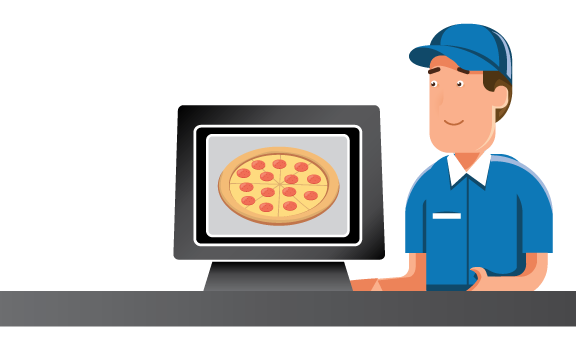There is no shortage of POS systems on the market. New vendors pop up every year, and others go out of business. Only a few of the available restaurant POS systems have the capacity to handle the unique requirements of a pizza and delivery operation.
Unfortunately, the difference between features on a checklist and wheels to the road capability in a working restaurant system may not be apparent until the system is in place—and failing.
As a result, it’s easy to choose unwisely, and too many restaurant operators learn the hard way.
Pizza & Delivery Point of Sale
A POS system that works well in another restaurant concept may quickly hit the wall in a pizzeria environment. The problems may begin with the customer database, the menu, inventory tracking, or delivery.
A pizza POS and delivery system is designed differently. Its core architecture revolves around the customer database—something that’s an afterthought for most transaction-based POS systems. While some of those add-on solutions may work, restaurant operators find that as order volumes increase, a system designed to handle customer information from the ground-up performs better. It’s faster, more reliable, and the wealth of customer details and order history it collects speeds up and improves the ordering experience. This makes marketing easier and more cost effective.
As strange as it may seem, a pizza menu is actually much more complicated than a typical restaurant menu. A system designed specifically for pizza and delivery dynamically builds and prices create-your-own pizzas or sandwiches. It deftly handles half-and-half orders (or any portioning) and 2-for-1 pricing. The array of complex coupons and package deals many pizzerias use to drive sales become easy to manage.
Pizza Menus
Pizza menu complexity also causes serious problems for most inventory tracking applications. There is no way a restaurant operator can define recipes (critical to inventory tracking) for every possible variation in a create-your-own menu.
What if the restaurant varies topping quantities are based on both the size of a pizza and the total number of toppings? Adjusting topping quantities is a common way to avoid a soggy vegetarian pizza, but it’s impossible for most inventory systems to track usage accurately. A pizza POS system can easily handle all the variations.
Consider the delivery piece. A system designed for pizza delivery can handle all the little details you need to deliver food profitably. Intelligent dispatch options let you select orders on a map for efficient delivery. Mapping and navigation keeps drivers on track. Performance management tools help you keep tabs on drivers and delivery costs, and delivery zones let you control fees and restrictions on where you deliver—even specify what times you want to deliver to certain neighborhoods. For a multi-unit company where one store closes earlier than another, the POS even determines what times you want Stores B and C to take over parts of Store A’s delivery area.
And with your delivery customers moving to digital, you need to be sure that all these components integrate with your web and mobile ordering sites. From menu selections and pricing to coupons and promise times. Save yourself the cost and aggravation of making the wrong choice: learn more about the specific requirements of pizza and delivery point of sale.
Posted on Thu, Jun 09, 2016 @ 07:06 AM.
Updated on October 25, 2022 @ 5:23 PM PST.


